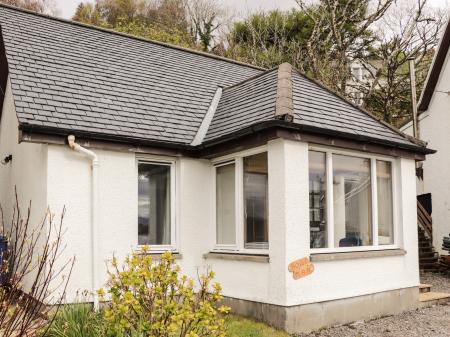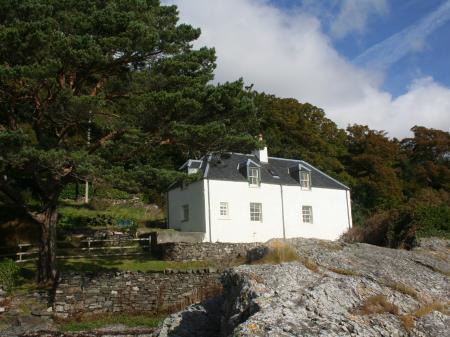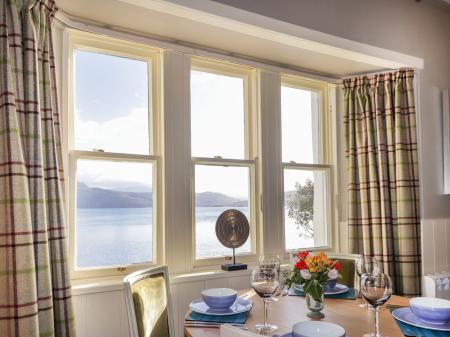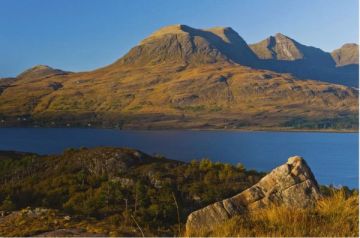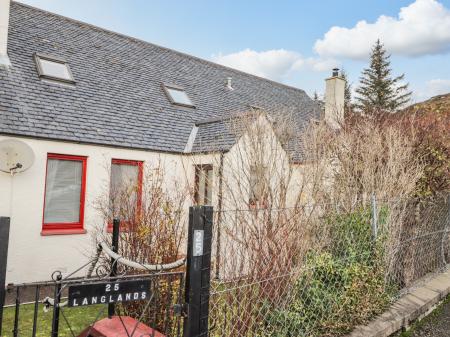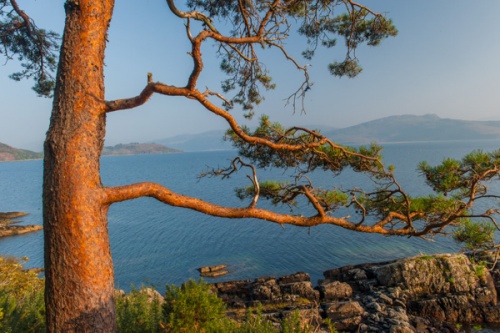
What to see
Balmacara Square
This is the heart of the estate, a traditional 18th-century village with a mill, ice-house, and a small pond in the middle, encircled by whitewashed cottages and several shops. A small visitor centre at Balmacara Square offers maps of the area, including highlighted circular trails and information about the estate. Though the maps are useful, I'd still recommend taking along a good OS map (OS Explorer 1:25,000 scale) if you go walking.
Forest Walk
From Balmacara Square a signed trail leads through a forestry plantation, under the brow of Sgurr Mor, and along a high ridge overlooking Reraig and the loch. There are wonderful views, with glimpses of the Isle of Skye in the distance.
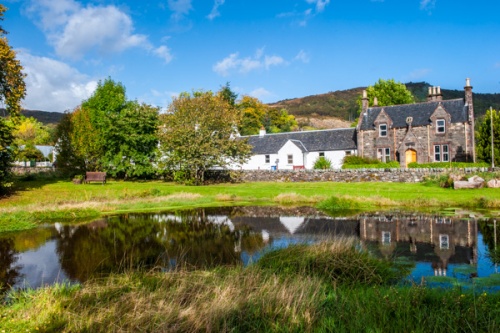
Coille Mhor
A trail leads from the northern edge of Balmacara Square, heading for Loch Achaidh na h-Inch. On the way, it passes through Coille Mhor (Big Wood), an area of ancient woodland, with oak, willow, and birch trees covered in moss and lichen, and wildflowers in season. This truly is a magical place, and the views are fantastic.
You can end your walk at the loch, and simply retrace your steps, or follow the road that runs around the edge of the loch until you see the remains of a partly-submerged crannog; a purpose built loch dwelling on an artificial island.
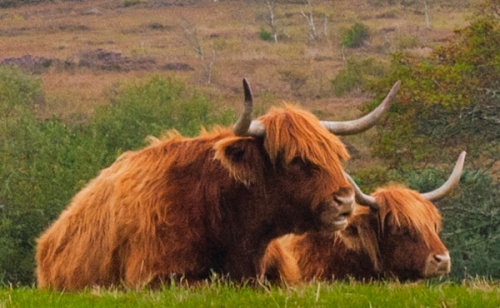
Plockton
A planned town, designed in 1801 as a centre for the fishing fishery by Sir Hugh Innes. Fishermen from Plockton traded up and down the Clyde coast, taking herring to Glasgow and Greenock. The heyday of Plockton was from 1850-1880 when demand for herring was at its highest.
The declining fishing industry led to an exodus of young people from Plockton, many going overseas to New Zealand. After years of neglect and a declining population, Plockton has enjoyed a resurgence in recent years. Used as the setting for the popular TV series Hamish MacBeth, Plockton has been called 'the prettiest village in Britain' and is extremely popular as a tourist destination.
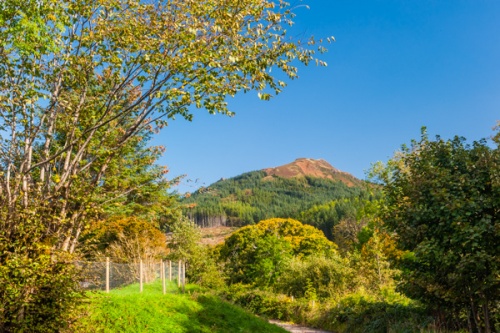
The National Trust for Scotland has a small visitor centre in the main Plockton car park, with displays on the heritage of the area put together by the local history society. It is a great place to learn more about the history of Plockton and Balmacara.
Part of that history is the unusual Open Air Church, a short walk from the harbour. This open space was used by members of the Free Church of Scotland when they broke away from the Church of Scotland in the 19th century. There are turf benches cut into the sloping hillsides, with a raised bank at one end to serve as a pulpit.
A more traditional church in Plockton is the 1827 Free Church of Scotland building, designed by the famous engineer Thoma Telford.
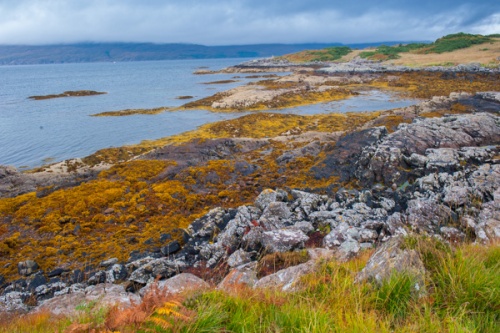
Coral Beach
Just behind the airstrip outside Plockton, a trail leads down to the shore at Coral Beach, where the secluded beach is made up of minuscule pieces of coral.
Plockton Crags Walk
My favourite walk in the Balmacara Estate, this circular route leaves from the village of Achnandarach and follows the road towards Plockton, skirting Loch Lundie before striking off through a forestry plantation, with views over Plockton. A trail leads from the plantation to Bealach Mor (Plockton Crags), for the most impressive views across the area. If the day is clear you can see over Loch Carron to the peaks of Wester Ross in the north, to Skye to the west, and south to the Five Sisters of Kintail. The walk then descends from the crags and joins the trail around Loch Achaidh na h-Inch.
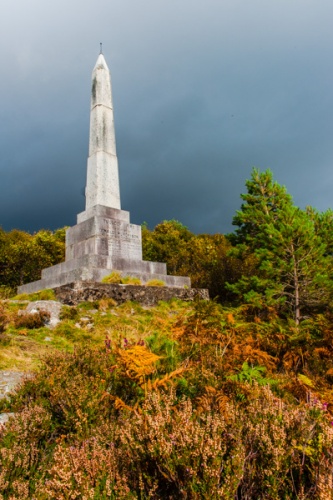
Duirnish Coastal Walk
From a small parking area by the Duirnish rail station, a circular trail leads through the traditional crofting township of Drumbuie, then follows the shore to Port-an-Eorna. This is otter territory, so keep your eyes open.
Murchison Memorial
Just east of Kyle of Lochalsh, on the south side of the A87, is a layby and a short trail to a striking monument to Colonel Donald Murchison, who served as the estate factor for the Earl of Seaforth between 1715 and 1719. When the Earl was exiled for his support of the 1715 Jacobite Rebellion, Murchison risked his life to collect rents on behalf of his master. He was eventually captured by government troops and imprisoned in the Tower of London.
George I pardoned Murchison on account of his outstanding display of loyalty to his employer. In fact, so moved was the king that he not only pardoned Murchison but granted him land as well.
In 1863 Murchison's great-grand-nephew, Sir Roderick Murchison of Tarradale, erected this obelisk in his ancestor's honour. The monument was hit by lightning in 1927 but was rebuilt by Kenneth Murchison Massie Cox Murchison the following year. The location is wonderful, with views across Loch Alsh and north to the Skye Bridge.
Kirkton Drying Barn, medieval grave, and hill fort
There are several interesting historical features at Kirkton, just west of Dornie. The kirk dates to 1807, replacing a 17th-century church, but in the graveyard just outside the church is a very well-preserved grave slab of a medieval knight in armour. On the south side of the road, near the church, is a drying barn, a community building designed to solve the age-old problem of how to dry wet hay in the wet Highland climate. The barn has louvred vents designed to draw air into the shed while keeping rain out.
Across the road from the barn, a signed trail leads up the hill to an old burial ground on a prominent knoll. The burial ground is sited within the earthworks of a dun, or hill fort. On the north side of the site is an ancient stone wall, and the current iron fence around the burial ground follows the line of the dun defences. The views are fantastic from atop the dun.
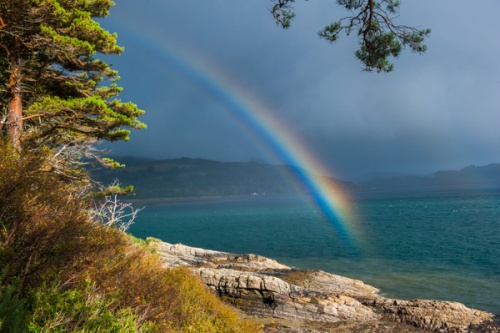
Lochalsh Woodland Garden
This beautiful 13-acre area of woodland and garden has sheltered walks beside the shores of Loch Alsh. The woodland includes stands of pine, oak and beech trees, plus more exotic species like bamboo, ferns, and fuchsias. The unexpected highlight here are the number of subtropical plants from New Zealand and Tasmania, as well as unusual Himalayan plants. Near Lochalsh House (not open to the public) are more formal garden areas, with trails leading down to the shore of the loch. This truly is one of the most enjoyable informal gardens I've visited in Scotland, and the easy access makes it a real treat.
Visiting
This is one of my favourite areas of Scotland, and one of the most enjoyable to explore. The easiest way to get a taste of what the Lochalsh area has to offer is simply to amble through the Lochalsh Woodland Garden. the trails are relatively level, though good waterproof footwear is always a good idea. The variety of woodland is simply stunning, with patches of colourful blooms in season, and glimpses of the loch peeking through the trees.
If you'd rather not exert yourself, then simply take the minor road to Plockton, one of the prettiest villages on the west coast. But this is really an area that begs to be explored on foot. I can highly recommend the short walk to the coral beach just outside Plockton, but far more varied and interesting is the circular walk from Achnandarach to Plockton Crags and then on to Loch Achaidh na h-Inch and its crannog.
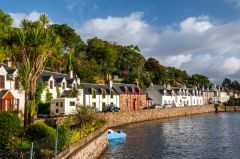
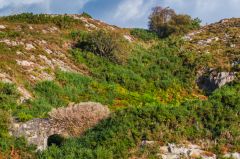
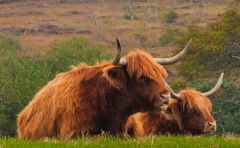
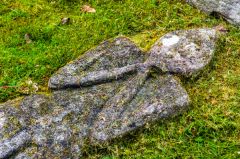
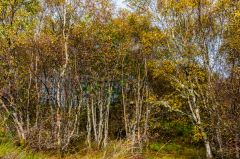
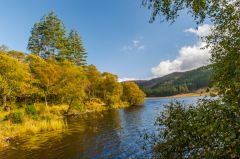
 We've 'tagged' this attraction information to help you find related historic attractions and learn more about major time periods mentioned.
We've 'tagged' this attraction information to help you find related historic attractions and learn more about major time periods mentioned.